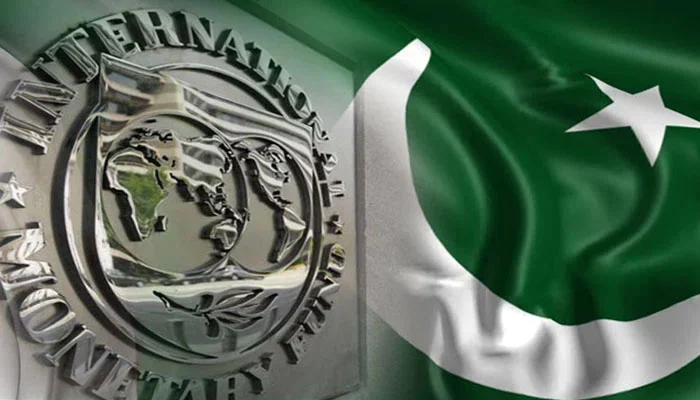For 2022–2023 and beyond, the IMF’s staff has provided extensive macroeconomic estimates for Pakistan’s economy in its report for the seventh and eighth reviews of the EFF with Pakistan.
Here we focus on forecasts for the current fiscal year, which do not take into account the effects of the recent floods.
First, we forecast the growth rate of GDP for 2022–23. The IMF predicts a significant slowdown in growth from the 6% seen in 2021-22 to the 3.5% seen in 2022–23.
This is probably because it is expected that extremely contractionary monetary and fiscal policies will be implemented to rapidly reduce the current account and budget deficits, slowing down the process of growth.
To the contrary, the IMF predicts that the economy will continue to show strength in 2020 and 2021.
After having a negative effect on real GDP at factor cost in 2021-22, net exports are projected to have a sizable positive effect in the following year.
In addition, businesses across all sectors are expected to see an investment boom in the years 2022 and 2023.
Investment is projected to increase from 13.1% of GDP in 2021-22 to 14.7% of GDP in 2022-23, representing a relatively rapid expansion of 16%.
Additionally, forecasts call for a growth in government investment equal to 0.3% of GDP.
The IMF’s economic theory is confusing. The drop in GDP growth from 6% to 3.5% will have a negative ‘accelerator’ effect on investment, although the IMF expects investment to explode. The SBP’s removal of concessionary project refinancing as well as the high policy rate of 15% all pose risks to private investment.
Given the emphasis on stabilisation rather than development this year, the Planning Commission’s projection of a GDP growth rate of 5 percent in its annual Plan for 2022-23 may be optimistic. Therefore, a reasonable prediction of GDP growth in 2022-23 is 4%, which is slightly higher than the IMF’s prediction.
The inflation forecast for 2022–23 is the next crucial projection. The IMF’s estimate of 19.9 percent is fairly exact. This is a huge increase from the Annual Plan’s predicted 11.5 percent growth. Inflation was predicted to be between 16 and 18 percent in 2022 and 2023 by the SBP’s MPC in one of its earlier meetings.
In the context of a global economic slowdown, the trajectory of commodity prices and the degree to which the rupee declines this year will have a significant impact on inflation expectations for the coming fiscal year (2022/23) and beyond.
There will be an effort to reduce the current account deficit by about 47 percent this year, and the IMF predicts that this will cause the rupee to weaken substantially by more than 24 percent.
Also, as per the terms of the IMF deal, administered prices are projected to increase dramatically in 2022 and 2023.
There will be a 40 percent hike in electricity prices or Rs 7.90 per kilowatt hour.
The increase in the petrol duty to Rs 50 per liter would have an ongoing impact on the cost of fuel.
To account for the soaring cost of LNG, the gas tariff may be increased by a factor of two.
The inflation rate is expected to rise sharply in 2022 and 2023 due to a number of factors.
Judging by July 2022’s year-over-year inflation rate of 27.3%, the increase in the cost of living is already visible.
Due to the aforementioned factors, we may expect inflation to remain rather high throughout the year.
Therefore, an inflation rate between 23 and 25 percent is more likely to occur in 2022 and 2023.
In my last essay, I analyzed the IMF’s forecasts for the balance of payments (BOP) in 2022 and 2023.
These forecasts have been shown to be highly speculative and precarious.
The confidence that exports of goods will expand by as much as 12.6 percent is perhaps the largest difficulty with the IMF’s prediction of a big reduction in the current account deficit of 47 percent in 2022–23.
Given that forecasts for global trade growth are barely about 3%, this seems quite implausible.
It’s safe to assume that exporters will benefit from the 24% drop in the exchange rate.
However, the cost of borrowing money has risen dramatically, making exporting less attractive.
Borrowing for capacity expansion or new projects carries a higher interest rate as well.
Additionally, it’s possible that the 9-cents-per-kilowatt-hour concessionary electricity pricing will be eliminated.
There has already been a 27% drop in exports in July 2022 compared to the previous month. Reducing the current account deficit by roughly half will require drastic policy changes in 2022-23.
While we will soon get to the IMF’s forecasts of public finances for 2022–23, we must first note several discrepancies with estimates by the Ministry of Finance.
IMF projections for the budget deficit in 2021–22 are 7% of GDP, whereas the final estimate based on fiscal operations for the year is 7.9% of GDP. Furthermore, official budget papers suggest a deficit of 4.9 percent of GDP for 2022–23, although the IMF projects a deficit of 4.6 percent of GDP.
In 2022-23, the deficit is expected to decrease by at least 3% of GDP.
It would take a miracle for this to occur in this year’s IMF program, as it has never happened before.
Most of the deficit reduction will come from cutting spending.
The International Monetary Fund predicts a sharp decline in total government spending from 19.1 percent of GDP to 17.1 percent, with current expenditure falling even further, from 17 percent of GDP to 14.7 percent of GDP.
The government is likely to reduce current expenditures as the cost of debt servicing is forecast to rise by 0.3% of GDP.
Non-interest current expenditures will have to be reduced from their current level of 12.4% of GDP to 9.8% of GDP.
Subsidies are expected to decrease the most, falling from 2.3% of GDP in 2021-22 to just 1.1% of GDP, with the largest decrease coming from electricity sector subsidies. It will be challenging to reach the targeted savings.
Given the exceedingly precarious nature of the economy at present, the IMF’s macroeconomic projections for 2022 and 2023 suggest a concerted effort to stabilize it.
In 2021-22, the current account deficit is expected to be cut by 46% relative to the absolute size of the current account.
Equally significant, the budget deficit as a share of GDP will need to be reduced by more than 41%.
There is a lot of pressure on the government from both abroad and at home, and we hope that they are able to rise to the occasion.
Mahnur is MS(development Studies)Student at NUST University, completed BS Hons in Eng Literature. Content Writer, Policy analyst, Climate Change specialist, Teacher, HR Recruiter.










